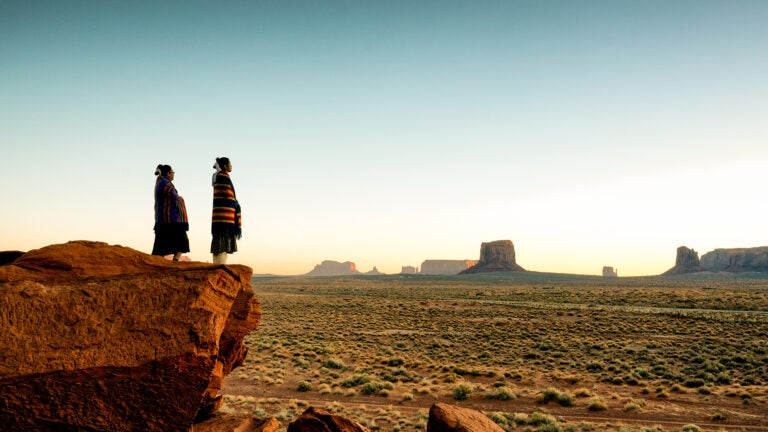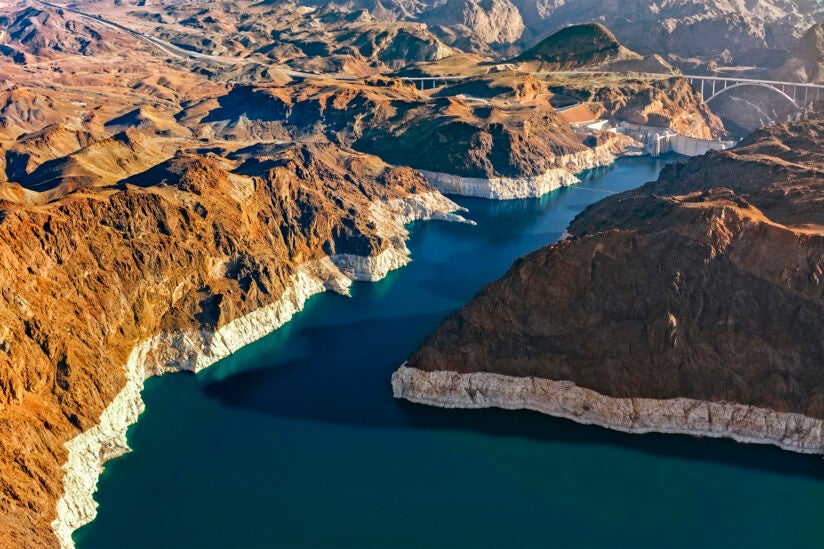
Without water, Native American tribes hit hard by the pandemic
Research into the pandemic experiences of the Navajo Nation and the Klamath Tribes underscores the need for the U.S. to honor tribal water rights legally recognized — but never delivered on — for over a century.
The Navajo Nation in Arizona — the largest and most populous reservation in the U.S. — was one of the areas hardest hit during the COVID-19 pandemic. Limited access to running water and basic infrastructure, like wells and indoor plumbing, placed the already vulnerable Navajo tribes at a heightened risk of disease, according to a USC legal analysis accepted for publication in the Saint Louis University Journal of Health Law & Policy.
It’s becoming increasingly clear that part of this health disparity is due to lack of access to water.
Robin Craig, USC Gould
“It’s becoming increasingly clear that part of this health disparity is due to lack of access to water, which all 574 federally recognized tribes in the U.S. are legally entitled to under the Supreme Court’s 1908 Winters doctrine. But their federally granted water rights have never been quantified and certainly never delivered,” said Robin Craig, professor of law at the USC Gould School of Law and author of the paper.
“We have people in the United States who don’t have running water in their homes and could not shelter in place during the pandemic because they had to get in their cars and drive miles to fill containers with water for drinking, hand-washing and cooking. The fact that that level of lack of infrastructure could still exist in the U.S. is a national shame.”
The Klamath: Tribal water rights held since ‘time immemorial’ made for stronger pandemic response
In the paper, Craig compared the pandemic experiences of the Navajo and the Klamath in Oregon to investigate how minimal access to potable water affected their respective capacities to address COVID-19.
The Klamath — unlike many displaced tribes in the U.S. — occupy a reservation within their traditional homelands in the Pacific Northwest’s Klamath River Basin. According to Craig, the Klamath Tribes entered the pandemic with two significant advantages: relative wealth — accrued during the fur trade of the 1820s — and actualized water rights that granted tribes access to potable water. These conditions paved the way for a swift pandemic response, made it easier for tribes to practice water-based prevention measures like hand-washing and allowed members of the Klamath community to adhere to stay-at-home mandates.

“The Klamath Tribes have water rights dating back to time immemorial, which is about as good as it gets under modern U.S. water law,” said Craig, who holds the Robert C. Packard Trustee Chair in Law. “When the state of Oregon quantified Klamath water rights in 2013 and after 40 years of litigation, tribes were put in control of large parts of the Klamath River system.”
Tribal water rights: 100 years of broken promises to the Navajo
The pandemic experience of the Klamath Tribes stands in stark contrast to that of the Navajo.
Craig cited the sobering statistic that 1 in 3 Navajo homes lack access to running water, and 30% to 40% must haul water from communal wells and for long distances to meet basic daily needs. This proved detrimental throughout the pandemic.
Without running water to drink and practice basic hygiene, it’s no coincidence that the Navajo Nation had some of the highest COVID-19 infection rates in the nation, Craig said. Daily trips to get food and haul water forced the Navajo to spend extended periods of time in close contact and outside of the home during shelter-in-place mandates.
After over a century of litigation and legalized oppression, the U.S. has yet to honor the Navajo Nation’s legal claim to water from the Colorado River. This is one of several water wars sowing tension in the American Southwest and the subject of a long-running U.S. Supreme Court case filed by the Navajo Nation against the state of Arizona.
The Navajo Nation made oral arguments before the high court last Monday, arguing that the state and federal governments have a responsibility to enforce the provisions of the 1908 Winters doctrine and deliver the Navajo Nation’s allotment of the Colorado River.
“As the United States pointed out quite vigorously in Monday’s oral arguments, we could be in this legal battle for a long time if the court rules in favor of the Navajo,” Craig said. “There are a lot of other tribes, many of which are in Arizona, that have not settled in court or gone through litigation to have their water rights quantified.”
A Supreme Court ruling is expected in June.



